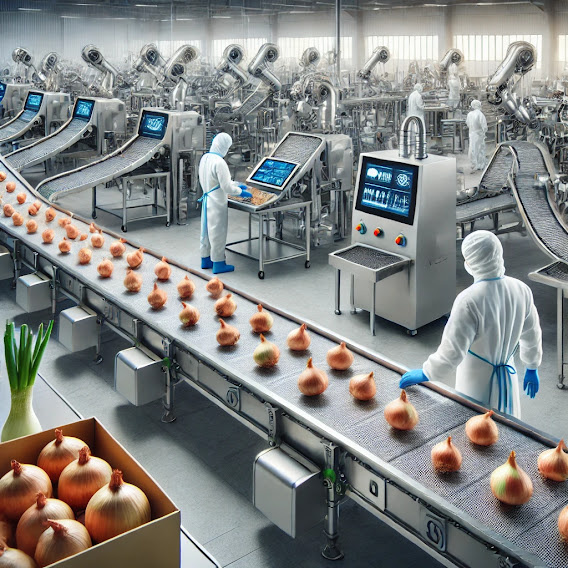Tackling Water Contamination in India: Innovations and Challenges
In India, the issue of water contamination is not just a concern; it's a daily struggle for millions. From the Ganges, considered sacred by many, to the rivers and lakes that sustain livelihoods across the country, water pollution poses a grave threat to both human health and environmental integrity. Let's delve into the Indian perspective on this pressing issue, exploring the causes, impacts, and potential solutions.
Causes of Water Contamination in India:
In India, water contamination stems from a myriad of sources, ranging from industrial effluents to untreated sewage and agricultural runoff. Take, for instance, the Yamuna River in Delhi, which receives massive amounts of untreated sewage and industrial waste, turning its once-pristine waters into a toxic cocktail. Similarly, in rural areas, indiscriminate use of chemical fertilizers and pesticides contaminates groundwater, affecting millions dependent on it for drinking and irrigation.
Impacts on Indian Communities:
The impacts of water contamination in India are deeply felt, especially among marginalized communities. In rural areas, where access to clean water is already scarce, contamination exacerbates health disparities, leading to widespread waterborne diseases like diarrhea and cholera. In urban centers, polluted water sources contribute to the burden of non-communicable diseases, such as kidney ailments and cancer.
Moreover, the environmental toll of water pollution is starkly evident in India's rivers and wetlands, once thriving ecosystems now struggling to cope with the onslaught of pollutants. For example, the dying Dal Lake in Kashmir, choked with sewage and algae blooms, serves as a poignant reminder of the ecological degradation wrought by human activities.
Technological Solutions Tailored for India:
Addressing water contamination in India requires context-specific solutions that leverage technological innovations while considering socio-economic realities. Here are a few examples:
1. Community-based Water Treatment Plants: Implementing decentralized water treatment facilities in rural areas can provide access to clean drinking water for remote communities. Projects like the Jal Jeevan Mission aim to achieve this by setting up water purification plants powered by solar energy.
2. Bioremediation Techniques: Harnessing the power of nature, bioremediation offers a cost-effective solution for cleaning up contaminated water bodies. Initiatives like the Yamuna Bioremediation Project utilize indigenous plant species to absorb pollutants and restore the river's ecological balance.
3. IoT-enabled Water Quality Monitoring: Deploying Internet of Things (IoT) sensors in rivers and lakes enables real-time monitoring of water quality parameters. The Smart Ganga Mission, for instance, employs IoT technology to track pollution levels in the Ganges and facilitate timely intervention.
4. Rainwater Harvesting and Greywater Recycling: Promoting rainwater harvesting and greywater recycling practices can alleviate pressure on freshwater sources and reduce dependence on polluted water bodies. Organizations like WaterAid India advocate for sustainable water management solutions at the grassroots level.
The Potential of Water Ionizers in India:
In the Indian context, water ionizers offer a promising solution for household-level water purification, particularly in areas with unreliable access to clean water. India's diverse geographical and infrastructural landscape presents unique challenges in ensuring consistent and safe drinking water supply to all its citizens. Water ionizers address this challenge by providing a decentralized approach to water purification, allowing households to take control of their water quality without relying solely on centralized treatment facilities.
One of the key advantages of water ionizers is their ability to remove a wide range of contaminants, including heavy metals, pesticides, and microbial pathogens, through the process of electrolysis. This is particularly crucial in regions where groundwater contamination is prevalent due to agricultural runoff or industrial pollution. By producing ionized water with improved purity and pH balance, these devices not only enhance the safety of drinking water but also potentially offer health benefits to consumers.
Moreover, water ionizers can play a vital role in bridging the gap in access to clean water between urban and rural areas. In peri-urban regions where piped water supply is unreliable or of questionable quality, ionizers provide a reliable source of safe drinking water for households. Additionally, their compact size and ease of installation make them suitable for use in a variety of settings, from urban apartments to rural villages, further increasing their accessibility.
While the upfront cost of water ionizers may pose a barrier to widespread adoption, especially among low-income households, the long-term benefits outweigh the initial investment. By reducing reliance on bottled water, which contributes to plastic pollution and environmental degradation, water ionizers promote sustainability and environmental conservation. Furthermore, initiatives aimed at subsidizing or incentivizing the adoption of these devices can help make them more affordable for marginalized communities, ensuring equitable access to clean water for all.
Conclusion:
In conclusion, water ionizers represent a promising technology with the potential to revolutionize household water purification in India. By providing a decentralized, efficient, and sustainable solution to water contamination, these devices empower individuals and communities to safeguard their health and well-being. As India continues its journey towards achieving universal access to clean water, embracing innovative technologies like water ionizers will be instrumental in shaping a healthier and more resilient future for all its citizens.
The fight against water contamination in India is both a challenge and an opportunity to innovate for a sustainable future. By embracing technology, fostering community engagement, and prioritizing environmental stewardship, we can safeguard India's water resources for generations to come. Let us join hands in this endeavour to ensure "Jal Hai Toh Kal Hai" (Water is the future).






Comments
Post a Comment